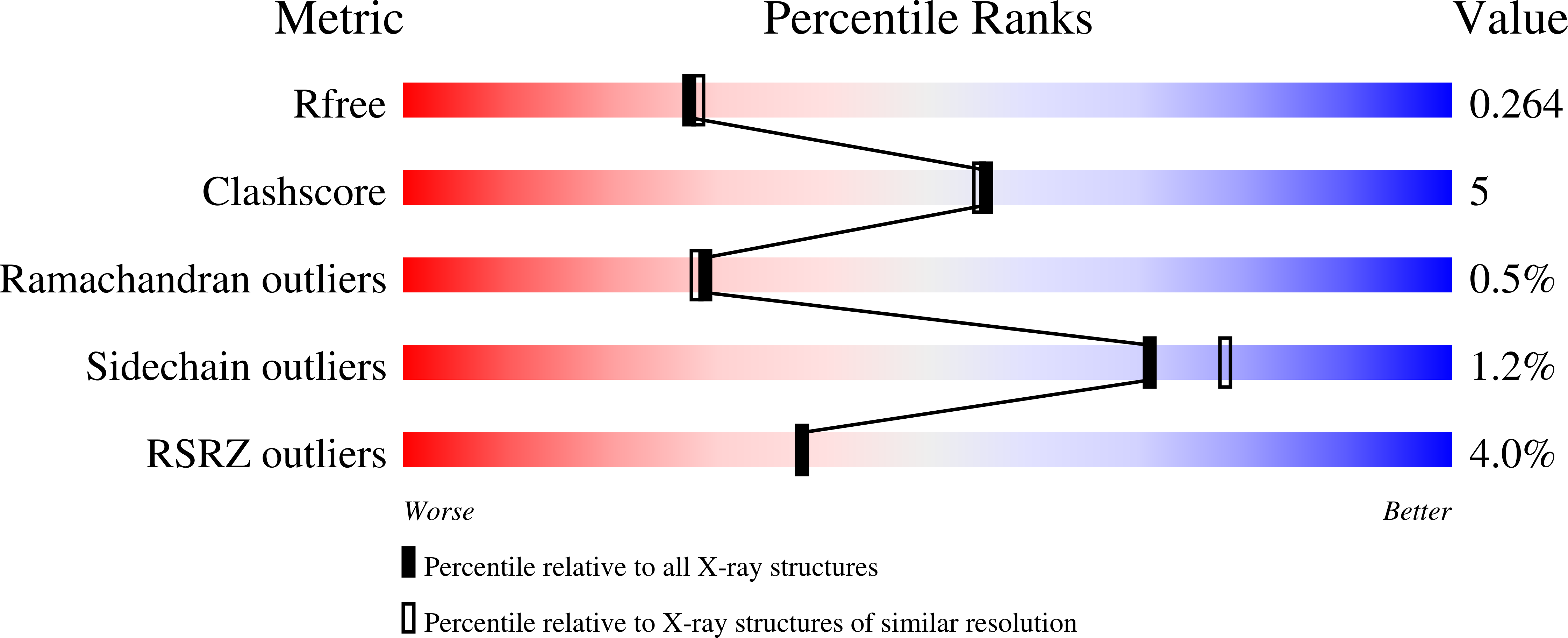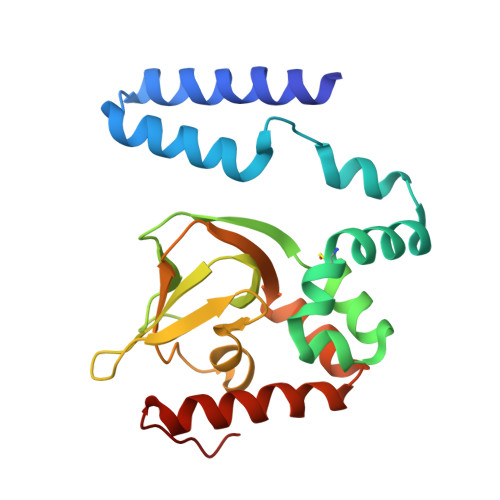Cyclic Purine and Pyrimidine Nucleotides Bind to the HCN2 Ion Channel and Variably Promote C-Terminal Domain Interactions and Opening.
Ng, L.C., Putrenko, I., Baronas, V., Van Petegem, F., Accili, E.A.(2016) Structure 24: 1629-1642
- PubMed: 27568927
- DOI: https://doi.org/10.1016/j.str.2016.06.024
- Primary Citation of Related Structures:
5KHG, 5KHH, 5KHI, 5KHJ, 5KHK - PubMed Abstract:
Cyclic AMP is thought to facilitate the opening of the HCN2 channel by binding to a C-terminal domain and promoting or inhibiting interactions between subunits. Here, we correlated the ability of cyclic nucleotides to promote interactions of isolated HCN2 C-terminal domains in solution with their ability to facilitate channel opening. Cyclic IMP, a cyclic purine nucleotide, and cCMP, a cyclic pyrimidine nucleotide, bind to a C-terminal domain containing the cyclic nucleotide-binding domain but, in contrast to other cyclic nucleotides examined, fail to promote its oligomerization, and produce only modest facilitation of opening of the full-length channel. Comparisons between ligand bound structures identify a region between the sixth and seventh ¦Â strands and the distal C helix as important for facilitation and tight binding. We propose that promotion of interactions between the C-terminal domains by a given ligand contribute to its ability to facilitate opening of the full-length channel.
Organizational Affiliation:
Department of Cellular and Physiological Sciences, University of British Columbia, Vancouver, BC V6T 1Z3, Canada.


















